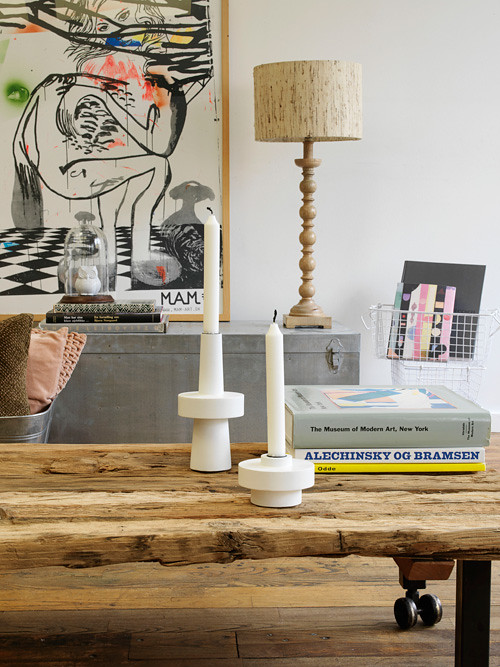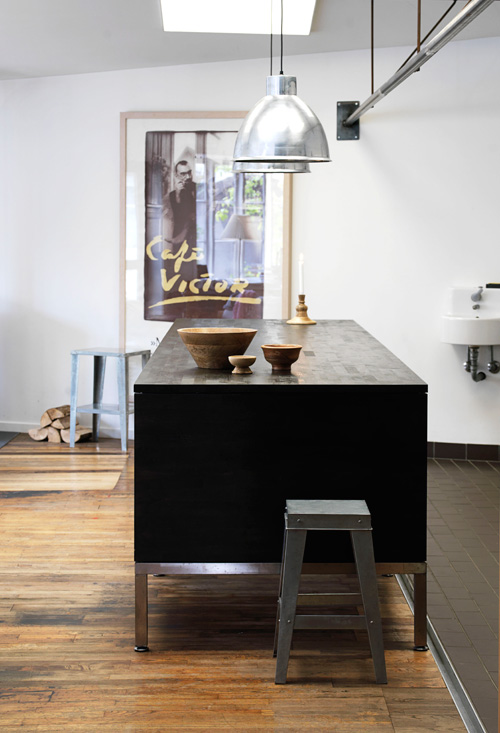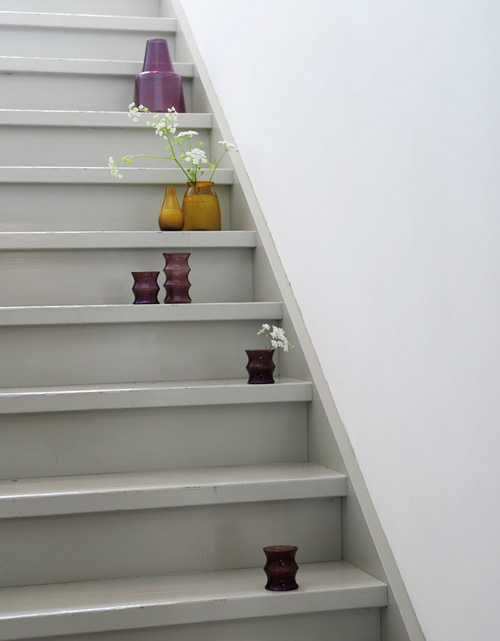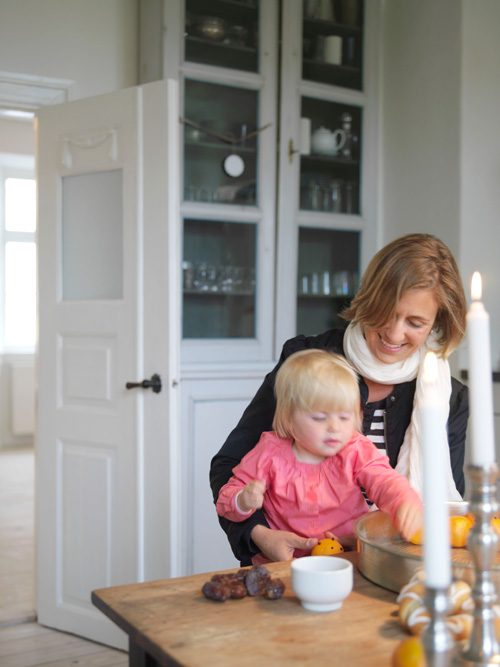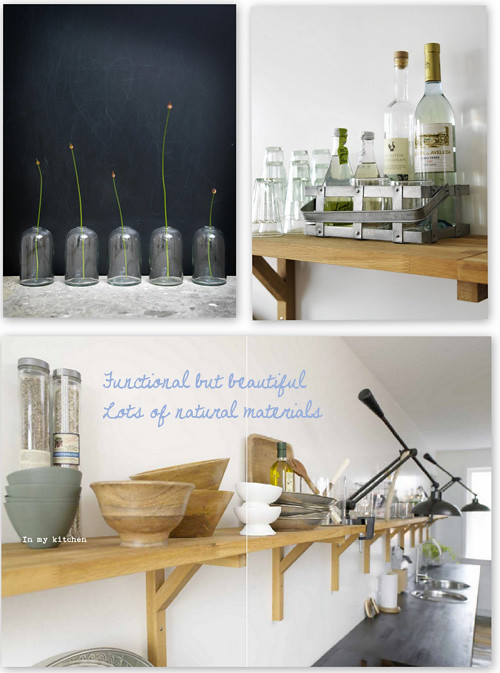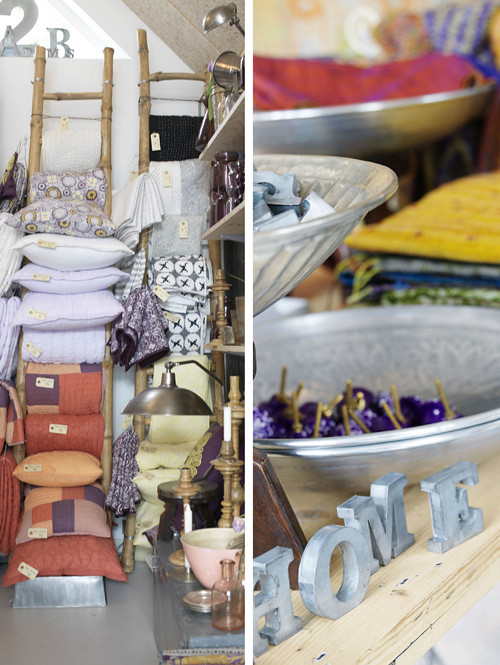Danish Decorating Trends
Lots of people ask me now that I live in northern Europe what I consider in style here in the world of interiors. It's hard to point to a few looks and say this or that is the norm just as it is impossible to pinpoint true American style these days. Fact is, Europe is a big place with tons of cultures and influence making each country quite unique but on the flip side, Europe is much more diversified than ever before (a topic that some are uncomfortable discussing and for good reason, the fear of homogenization). I think that fear is something most of us who grew up in 1980s America where we watched borders slowly fade can relate to... Exciting at first, but today many of us long for the days when travel from one state to the next was exciting -- it meant being exposed to all new stores and restaurants, even chain stores were different, and that was pretty darn cool when I was a kid.
I guess that is why so many of us cling to handmade and flock to small shops even if it means paying more -- and why we support local restaurants -- we are trying to hold on to that feeling of uniqueness that we remember from our childhood. My observation entirely but what do YOU think?
Truth is, those living outside of Europe have long admired it for maintaining its uniqueness, from country to country... and that it maintains a special old world charm. However, as you watch the Travel Channel and see show hosts wander from city to city, you can't help but notice recurring store signage. Borders here are fading in some ways too. I think the difference though is that countries are not so quick to allow products in from other countries unless their is a real demand or interest but also because you are dealing with different governments and languages, it just takes longer to negotiate deals and import/export goods. It's not as easy to set up shop in another country.
Also, new brands from "outside" are not so easily adopted with a smile. And yet it is exciting to see the good stuff leak over the borders to Germany, I can't deny this, especially since Germany doesn't have a strong identifiable "style" post WWII like the Danes, French or the Italians maintained throughout the years. Oh yes, once they did, in fact their design and art movements spawned many other movements worldwide, just look at the Bauhaus and it's influence. However, since the second world war, function trumped beauty in many respects because so much was destroyed here and people were forced to build quickly to recover part of their life that was lost. But lately the tide is changing and younger Germans are starting to move and shake things. Functional products are looking really good to me and the overall future of German design (interiors, handmade arts & crafts, decorating) feels bright once more. Outside influence is definitely helping, as I see more and more Danish design here (and some Dutch) which excites me as these are two of my favorite places when it comes to design that I personally relate to.
Given that Germany and Denmark share a border to the north, it's natural that Danish design would start to creep over and influence the modern German home especially here in the north. You can see this in many shops and some cafes in Hamburg, the influence is there for certain. Pick up any good German decorating magazine and you'll see some of the hallmarks of Scandinavian design being highlighted more and more, particularly the Swedish and Danish stuff. Scandinavian design is very easy to classify but also to like and I'm guessing Danish goods appeal to Germans because the design is not only practical for everyday use and the lines are clean for the most part, but there is a rustic, natural feel to it that Germans as a whole like and can identify with as they are a culture very close to and respectful of, nature. Germans are known for being extremely brand loyal. It takes time for them to warm up to something (or someone) but once you've won them over you have a customer/friend for life. This is especially true of northern Germans, and since I've been visiting here for the past 11 years and now live and work here as well, I have an outsider's opinion based on the changes I've witnessed over the years when it comes to design in this country. This tells me that Danish companies who win over the hearts of people here will gain a loyal market that will stay in place for a long, long time.
If you are curious to see some examples of current Danish designers who are making some of today's top trends come to life, just flip through the e-pages of a TineK Home catalog, check out House Doctor, Ferm Living, Normann Copenhagen, HAY, Noa Noa (fashion brand but still), DAY, Greengate, Rice, Madam Stolz, and you'll definitely find many beautiful things that are very clean, some colorful and quirky, others more streamlined and modern with a neutral palette.
In my mind I tend to group some of the Danish styles that I'm seeing quite strongly here where I live in three key categories: Danish Pretty (Greengate, Rice), Old Meets New Danish (DAY Birger et Mikkelsen homeware, House Doctor, TineK Home, Madam Stoltz) and New Danish Modern (Normann Copenhagen, HAY). This post is more about Old Meets New Danish, as you can clearly see in the images I've selected. And by the way, these terms are all "Holly made" so they may or may not be how these individual companies classify themselves!
Old Meets New decorating, Danish style anyway, is clean and bright (when you live in the north, white is essential!) but there are definite French, Asian and Moroccan influences in surfaces, shapes, colors and patterns. There is also an industrial edge making this style accessible to city loft dwellers in addition to those living in country homes. Think rustic pottery, straw totes with leather handles, metallic (mostly silver) surfaces, linen, jute, wool, metallic linens, rustic wood, industrial, vintage Moroccan tea trays, metal bases on tables, metal lockers, wheels on rustic wood coffee tables, etc.
If you want to recreate this look in your own home, consider keeping your foundation pieces clean and fuss-free, mixing in a few statement pieces that may be painted in gray, blue or black for instance or you may choose to bring your statement pieces in using metal furniture - lockers, metal cabinets on wheels, wood tabletops with metal pipe bases... Also pay close attention to texture. This is what makes this look work. The Danes are naturals when it comes to making people feel at home, I felt very accepted and at home in Copenhagen earlier this year when I was there to work on my book. They are also effortlessly stylish, which I admire so much.
This style is a well-edited look appearing to be effortless, but in reality it is very well thought out. If you are trying to recreate the look use some of the images in this post as your inspiration. No matter where you live, no doubt you can find objects in your local neighborhood that can be used to create this look if you don't have access to the companies that I've mentioned above.
If you like the photos that appear in this post, they are from the Danish brand Madam Stolz, run by husband wife duo Pernille and Peter Stoltz since 1995 who live and work on the island of Bornholm in Denmark. They also run a delightful shop during the summer in Svaneke that I would love to visit as it appears as though everything they stock I would consider owning! If you are interested in Madam Stoltz products, please visit their website to see their online catalog or contact them directly to find a sales rep nearest to you.
(images: madam stoltz)
